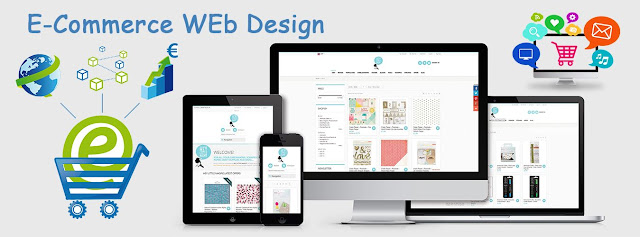How to build a successful Ecommerce Website from Scratch
Welcome readers to your friendly guide on building a successful ecommerce website from scratch. In today's digital world, having an effective ecommerce platform is crucial for businesses looking to reach a wider audience and increase sales.
Whether you're an aspiring entrepreneur or an established business owner looking to build ecommerce website and expand your online presence, this comprehensive guide will take you through the step-by-step process of building a successful ecommerce website.
1. Planning Your Ecommerce Website
A. Defining Your Goals and Target Audience
Before diving into the technical aspects of building an ecommerce website, it's essential to define your goals and identify your target audience. Determine the purpose of your ecommerce website and what you want to achieve. Understanding your target audience's needs, preferences, and pain points will help you tailor your website to their expectations.
B. Conducting Market Research
Market research plays a crucial role in the success of any ecommerce venture. Research market trends, competitors, and customer expectations to gain insights into what works and what doesn't. Analyse gaps in the market that could be filled by your ecommerce website. By understanding the competitive landscape and customer demands, you can create a unique selling proposition that sets your ecommerce website apart.
C. Choosing the Right Ecommerce Platform
Choosing the right ecommerce platform is one of the most critical decisions you'll make in the website building process. Evaluate different platforms based on ease of use, scalability, features, and pricing.
Consider factors like customisation options, payment gateways, inventory management, and security features.
2. Designing Your Ecommerce Website
A. Creating a User-Friendly Interface
A user-friendly interface is essential for providing a seamless browsing experience to your customers. Optimise website navigation by organising products into logical categories and subcategories. Ensure that your website is intuitive and easy to navigate, allowing users to find what they're looking for quickly.
B. Developing an Attractive Visual Identity
First impressions matter, especially in the world of ecommerce. Choose a visually appealing theme or design that aligns with your brand identity. Consider colours, fonts, and imagery that reflect your brand's personality. Use high-quality images and graphics to build ecommerce website and showcase your products effectively.
C. Optimising Website Performance
Website performance is a critical factor that directly affects user experience and search engine visibility. Optimise page load speed to minimise bounce rates and improve conversion rates. Implement caching mechanisms, compress images, and leverage content delivery networks (CDNs) to enhance website performance.
3. Building Product Catalog and Inventory Management
A. Organising Product Categories
Organising your product catalogue into logical categories is essential for providing a seamless browsing experience for your customers. Create categorisation hierarchies that make sense and allow for easy navigation.
B. Implementing Effective Inventory Management System
Effective inventory management is crucial for ensuring customer satisfaction and streamlining your operations. Set up inventory tracking systems that provide real-time updates to avoid overselling or running out of stock.
Final Thoughts
Building a successful ecommerce website from scratch requires careful planning, thoughtful design, and effective marketing strategies. Remember, to build ecommerce website is an ongoing process that requires continuous improvement and adaptation to meet changing market demands. Take action, implement the outlined strategies, and start your ecommerce journey with confidence.




Comments
Post a Comment